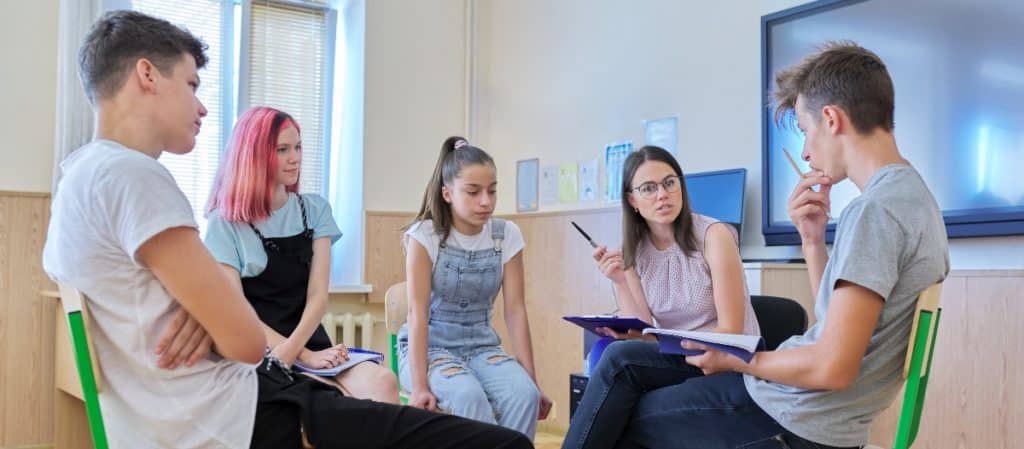
Students feel safe, included, and necessary if their voice is valued through patient and active listening. As we work toward cultivating a classroom community that validates students’ needs for belonging and significance, we must not only teach expectations and skills for listening and speaking, but we must also structure our instructional time to reflect our belief that students’ voices and ideas are necessary.
After recently reading Matthew Kay’s Not Light, But Fire: How to Lead Meaningful Race Conversations in the Classroom, I adopted some new discussion habits in my weekly classroom routine. As teachers, one way we communicate what we value to students is by how we allot time—the most foundational element of classroom management. Unfortunately, given the demands of mandated academic standards and schoolwide expectations, students’ personal lives rarely feel like a priority. Here are three activities that I’ve seen help build trust and community so that conversations in our classroom space are open and students feel invited to share their personal interests and values.
Content subject matter is clearly the focus of my academic block – it would be negligent for it not to be. However, I will always set aside at least five good minutes at some point in our daily gathering to engage with young folks as humans, not just as students. Most days, these five minutes typically fit logically at the beginning of class, but, depending on the day’s objective and lesson plan, this could happen at the middle or end of class.
During these five good minutes, I intentionally engage with students around their personal interests as they stream into class. This could be celebrating a local sports team’s win (or commiserating a loss), asking opinions about a popular television series from the night prior, or inquiring about recent school social events. Once I notice most folks have entered and completed our typical entrance routine, I will pivot and bring the rest of the class into that informal chat.
The idea here is to acknowledge that students are humans with interesting ideas and opinions outside the scope of the content curriculum, and to show that I am, too. We are all vibrant humans worthy of being heard.
Zac Chase, the coauthor of Building School 2.0: How to Create the Schools We Need, developed a weekly activity he calls Good News: on a day that is conducive to taking a five-minute break from content instruction (my class typically does this on Fridays), everyone spends time sharing positive happenings in their lives. Students volunteer to share any event (no minimum threshold in terms of how “big” or “small” the good news is), and their peers listen patiently and actively. After each share, students connect with classmates about what they shared and celebrate the good news in each other’s lives.
Spending five to ten minutes per week doing the Good News activity means an investment of only one hour per month. This hour goes a long way toward building a classroom community that celebrates the best of each other’s lives and cultures.
At least once a month (more if possible) our math department tries to tweak our provided curriculum to address the same standards through problems we’ve adapted to reflect our students’ current interests.
Their interests could show up in a variety of ways. For example, when calculating percentages with sixth graders, I have used stills from YouTube videos or paused popular songs on Spotify midplay; then students calculate the percentage of the video or song yet to be played. I have also discussed local or national news stories relevant to students’ lives with them—such as graphs related to school funding or the data for the amount of time teenagers spend on a given phone app. There’s a wealth of mathematical discourse available in these current events, but there is also a great opportunity for students to share their personal opinions and ideas, too. These small tweaks to the curriculum add a personalization that enhances students’ engagement in math but also communicates my belief that their interests are important and worthwhile.
Joe Cole is the director of Teaching and Learning at New City Charter school in Minneapolis, Minnesota.